
Let me say right up front that I have a definite bias regarding combustion in homes. If you saw the articles about the improvements I’ve made in my house over the past year, you know that I ripped out the gas furnace and water heater and even had the gas meter removed. I like electricity because it’s a great way to move energy and, even better, it keeps getting cleaner.
So, my first recommendation for combustion safety is usually to get rid of the combustion appliances. I realize, though, that not everyone can do that, so let’s go over the basics of combustion safety. I’ll keep this as short as I can, and if you want more detail, go watch the video of the last week’s BS + Beer Show, where Ross Tretheway and I discussed this topic for an hour and a half.
Three types of combustion problems
Living safely with combustion appliances in your home means paying attention to three general types of combustion safety issues.
Fuel problems. This could be anything related to the fuel being used for combustion:
- Gas leaks
- Oil spills
- Coal dust
- Termites or other critters in firewood
The safest situation is when all the fuel is kept outdoors, as with a propane tank or woodshed. The most prevalent issue in this category is gas leaks. People who do a lot of combustion safety testing tell me that a really high percentage of the homes they test have gas leaks. Like 80 to 90 percent high.
Combustion problems. The second type is when the combustion itself is poorly contained. We’re talking house fires or even, as happened in Massachusetts in 2018, explosions. This is another reason that getting your house checked for gas leaks is a good idea.
Venting problems. Burning a fuel produces a variety of different combustion products, from soot (carbon) to carbon monoxide. Even when the combustion process works as designed, it still produces water vapor, which goes into your indoor air if it’s not vented to the outdoors. In winter, that could be a problem in some houses, unless you like water dripping down your windows or mold growing on your walls. The problems here stem from stupid design (e.g., unvented fireplaces), stupid building codes (e.g., allowing natural draft water heaters in conditioned space), and stupid installations (e.g., vents that don’t draft because of insufficient rise, like the one below).
![Natural draft water heater flue trap [Photo by Jason Fisher, Bryan, TX]](https://images.greenbuildingadvisor.com/app/uploads/2020/12/09160547/gas-water-heater-vent-mistake-carbon-monoxide-450.jpg)
Let’s focus on the venting problems now.
Carbon monoxide and water vapor
Nitrogen dioxide, carbon dioxide, and other combustion products can certainly create problems for indoor air quality, but I’m going to focus on the big two here, carbon monoxide (CO) and water vapor. Let’s start with CO. As you see below, carbon monoxide has a carbon atom and an oxygen atom. It’s similar in size, shape, and chemical activity to the oxygen (O2) our bodies need. When it’s in the air we breathe, it can take the place of oxygen in the bloodstream, forming what’s called carboxyhemoglobin rather than the oxyhemoglobin our cells are looking for. The result is flu-like symptoms at lower levels, unconsciousness or death at higher levels.
If you have combustion appliances or an attached garage at your house, it’s essential to have a low-level carbon monoxide monitor, such as the ones made by CO Experts or Defender. (TruTech Tools is a great place to order them.) The less expensive UL listed carbon monoxide detectors will not protect you from levels that can make you sick. They’re allowed to stay silent until the CO level reaches 70 parts per million for two hours. So, you could breathe in 69 parts per million 24/7, and it won’t tell you. Nobody likes “nuisance alarms,” you know.
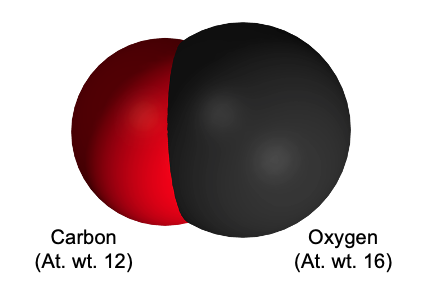
Water vapor is the other biggie, and as long as all your combustion appliances vent to the outdoors, you shouldn’t have to worry about this. Ventless gas log fireplaces and unvented space heaters are the biggest culprit here. Once I was called to a home for an assessment, and I walked up to the house on a chilly January day and saw right away that this woman had a serious moisture problem. The main door was open, and the all-glass storm door was dripping with water on the inside. When I walked through the small house, I saw three unvented gas space heaters…and a bit of mold here and there.
If you’re thinking that adding water vapor in the winter is good to combat low humidity, I’ll say that you’ve gone way too far if you have water dripping down the storm door. I’ll also say that the first way to deal with low humidity is air sealing because cold air is dry air. The other issue here is that high humidity inside the house could be causing problems inside poorly insulated and air-sealed parts of the building enclosure, like the walls.
Know your combustion equipment
The first place to focus your attention for venting problems is on any combustion appliance that doesn’t vent directly to the outdoors. Unvented space heaters and ventless fireplaces, as mentioned, dump all their combustion products into your indoor air, and thus into your lungs. With complete combustion, they add water vapor and carbon dioxide to the air. Your gas oven and cooktop are likewise not directly vented, but most homes do have a range hood above them. You just have to remember to use it…every time you turn on the oven or cooktop. Especially the oven. At startup, a gas oven can produce an enormous amount of carbon monoxide. I measured one that put out nearly 1,000 parts per million of CO until it got warmed up. If you don’t have the range hood on when they’re spewing that stuff into your kitchen, you’ll end up breathing some of it.
The second place to focus is on any combustion appliance that’s of the “natural draft” type. Some houses do still have natural draft furnaces, but since their manufacture ended in the mid 1980s, you probably don’t have to worry about that. Many, many homes, though, do have natural draft gas water heaters. You can identify them easily because they have a metal flue above the tank and a gap between the flue and the tank, as shown below. When they’re operating as designed, the exhaust gases go up the flue and out of the house. The gap is to pull in a little extra air to aid the venting.
The problem here is that the exhaust vent is connected to the house air (assuming it’s inside the house). That means air could be coming down the flue instead of going up, depending on the pressure difference between inside and outside. If air is coming down the flue while the water heating is firing, the exhaust gases won’t be going up the flue. Instead, they go into the house. This is called backdrafting. Even worse, the flame at the bottom of the water heater is likely to be starved of oxygen, meaning the combustion will be incomplete. Thus, you’re likely to get more carbon monoxide than if everything were operating correctly.
![A natural draft water heater has a gap between the tank and the vent [Photo by Energy Vanguard]](https://images.greenbuildingadvisor.com/app/uploads/2020/12/09160740/natural-draft-gas-water-heater-backdrafting.jpeg)
If you’re ready to replace the water heater, you have a number of options. You could get a direct vent or sealed combustion water heater, which brings in its own combustion air. You could also get a power-vented water heater, which uses a fan to vent the exhaust. Or you could do what I did and get rid of the gas water heater altogether. I replaced mine with a heat pump water heater, which I love!
Careful with that foam gun, Eugene
Negative pressure can cause natural draft water heaters to backdraft. Air sealing makes a building enclosure more airtight. The more airtight the building enclosure, the more negative pressure any given exhaust fan will create. So, another rule for dealing with natural draft combustion appliances in the home is to hold off on air sealing until you either replace the offending equipment or have the house tested by professionals before and after air sealing. The last thing you want to do is air seal a home that’s on the edge of combustion safety. Do you know where that edge is?
![Air sealing a house that's on the edge of combustion safety can be dangerous [Photo by Energy Vanguard]](https://images.greenbuildingadvisor.com/app/uploads/2020/12/09160831/bathtub-hole-air-sealing-spray-foam.jpeg)
What to do next
Combustion safety is no joke. If you burn fuels inside the house, make sure they vent to the outdoors. Before you turn on your oven or cooktop, turn on the range hood. Get a low-level carbon monoxide monitor. And if you want help from a professional, look for a BPI certified Building Analyst who can do a number of combustion safety tests for you. And finally, to learn more, you could grab a beer and go watch that video of the BS + Beer Show I did with Ross Tretheway.
_________________________________________________________________________
Allison Bailes of Atlanta, Georgia, is a speaker, writer, building science consultant, and founder of Energy Vanguard. He is also the author of the Energy Vanguard Blog. You can follow him on Twitter at @EnergyVanguard.
Weekly Newsletter
Get building science and energy efficiency advice, plus special offers, in your inbox.





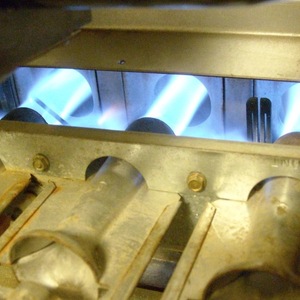
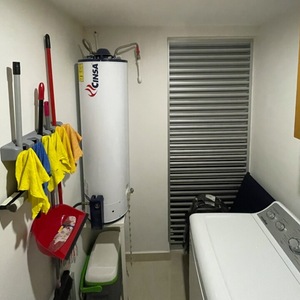
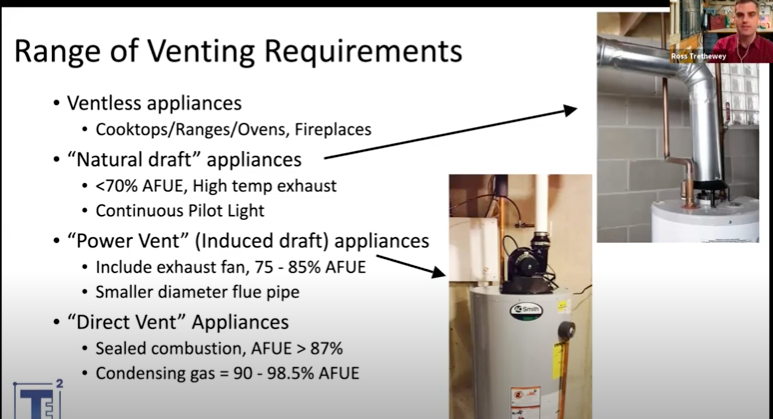
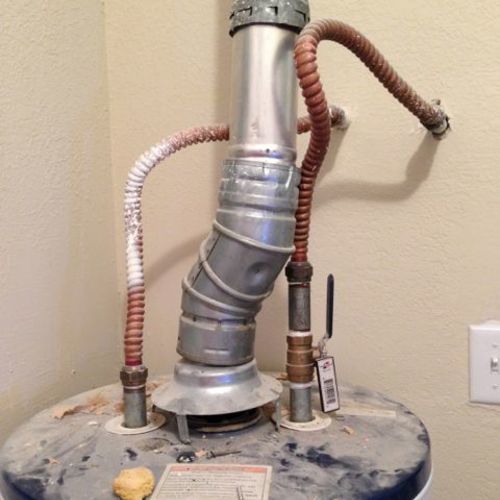






14 Comments
Bill if we are going to talk about all the ways combustion can kill you let’s not ignore the fact that electric kills 5 times more people than everything on your list combined.
“a really high percentage of the homes they test have gas leaks. Like 80 to 90 percent high.” Is that 80% of homes have, an unburned gas leak? Or is that a fuel and vent leaks combined to get to 80%? Are we talking about leaks so small that the occupants do not smell the leak?
Walta
Who did this abomination? Is that a rubber garden water line hose and why is it wrapping around the flue? It almost appears to be touching the flue.
Yes, Peter, this is indeed an abomination. Rob George from ICF got the photo from his colleague Jason Fisher and sent it to me a while back. I'd hope this is a DIY job, but I've seen some pretty bad work done by contractors, too.
Maybe a misguided attempt at a trap to reduce air flow when off?
How about back up for when electric goes out? A NG on-demand WH will operate when electricity is out if provided with a small backup battery. And, a burner can still cook food when electricity is out.
I've seen the damage 1 million gallons of water did on a house due to lack of heat, including collapse of foundation walls (was the first to inspect, immediately got a PE and was able to confirm it was 1 million gallons from a review of the water bill). In some cold climates, does a somewhat "inexhaustible" supply of NG provide for reductions in certain risks that may outweigh certain other inherent risks in NG?
Here's an example: "Avista customers in northeastern WA could be without power for 1-2 days" https://www.kxly.com/nearly-8000-avista-customers-without-power-around-inland-northwest/
And the infamous storm of 1996: "Trees and power lines collapsed beneath the weight of up to an inch-and-a-half of ice, causing 100,000 homes and businesses to lose power in Spokane and Kootenai counties for up to two weeks. Three people died and thousands were driven into emergency shelters. Ice-coated trees blocked roadways and ominous icicles hung from roof awnings and utility lines."
If you lived through that, I think you'd be hard pressed to give up on NG.
A PE (i.e., a license with personal liability) will think hard before making decisions on NG pros/cons. The head of an HOA will also think hard, even though covered by E&O insurance. It really must be made clear (or accepted?) that NG has benefits. Lately, I've seen a strong anti-NG bias on GBA. How about a NG post that says where it is appropriate, particularly when it comes to saving lives and property.
From an article:
Unheated attics were the most common cause of burst pipes. “Many people don’t realize there’s plumbing there, so they don’t think they need to heat that space or install insulation,” Kim said. The same goes for pipes in concealed spaces between interior and exterior walls.
“Our average loss related to frozen pipes is $27,000, but our most expensive claim was $1.7 million,” Kim said. “People tend to get complacent about winter storms, but they can be extremely damaging. There’s very little awareness of the significance of the loss potential.”
And for those that think batteries are the solution: "The race is on to find a steady source of lithium, a key component in rechargeable electric car batteries. But while the EU focuses on emissions, the lithium gold rush threatens environmental damage on an industrial scale"
https://www.theguardian.com/news/2020/dec/08/the-curse-of-white-oil-electric-vehicles-dirty-secret-lithium
>"How about a NG post that says where it is appropriate, particularly when it comes to saving lives and property."
OK, so how about it? Seriously- I'd like to read it! Post something!
Can you 'splain to me the circumstances when NG is going to save life & property (and other solutions wouldn't), where only NG will do again? suspect most of the Avista ratepayers in the Kootenai and Spokane county WA aren't on the NG grid, and would be relying on much more expensive propane or #2 oil or (less expensive) cordwood as backup, not NG. Ice storms of that magnitude are rare in that area, and paying more every year for energy for a "maybe" isn't financially rational- even fossil fired backup generators for rare events when the shit really hits the fan has a better bang/buck than unpowered gas appliances.
>"How about back up for when electric goes out?"
Most of us in the first world have very reliable local grids. The US has crummer reliabilty numbers than Europe, but per one EIA report recent enough to matter:
"In 2016, customers experienced an average of 1.3 interruptions and went without power for four hours during the year."
(see: https://www.eia.gov/todayinenergy/detail.php?id=35652 )
FOUR hours per YEAR is less than 0.05% of the time.
The that's the US average- it's not evenly distributed. Most people have even fewer interruptions, of shorter total duration.
The people who have the most frequent or much longer duration outages are aware of the that situation and plan accordingly. eg:
On a project I've been consulting on recently the local grid experiences (tree induced) damage during almost every wind storm, and the homeowner has installed a propane fired backup generator sufficient to cover the (ground source) heat pump, along with the rest of the now all-electric house to handle it. Their generator is no bigger than (and smaller than many) similar generators serving his propane & oil heated neighbors, and even at full power it burns propane at a slower rate than a typical propane fired furnace or boiler would. The generator system has been put to use a couple of times in the past 6 weeks due to one wind event and one minor ice storm.
So is this a case has fossil fuels to the rescue? Sure! But it doesn't make the case for gas fired combustion in the house, and it's not the only viable solution.
Having 4-6 hours of battery backup would likely cover all but the worst of the grid-out incidents, but would cost more to install than the propane burner. The local utility at that location is now offering home battery installments in exchange for utility some control of the battery under extreme grid load and/or grid damage to keep the lights on in the neighborhood, not just the one house, as well as using it for frequency & voltage control services (which turns out to be a less expensive than gas-peakers, etc, especially when capitalized by the homeowners.) With utility involvement the terms are good enough that it would be a <5 year "payback" (simple), so it's likely that they will install some amount of battery back up when the PV goes up in the next year or so. They'll probably keep the propane burner (it's already sunk cost), which may be needed in a major ice storm or post-hurricane, but it will run a lot fewer hours per year than it does right now.
But there may be use cases for NG that I'm not considering, so please, fill in those blanks, eh!?
Thank you Dana, I apologize if the post came across in an antagonistic manner.
You mention "first world", I've lived in India, Indonesia, Brazil, Europe and throughout the US (TX, MA, PA, IL, WA, NM, MT), I've told the utility company in MT that I had better reliability in India. Some of the unreliability has to do with 1 million people spread over 150,000 square miles, some has to do with animals, and other weather. In MT, I chose an ASHP, which some view as an expensive choice. And, I had to buy a generator (run on propane) due to the number of outages.
I could tell you more about Spokane, but won't bore you. I knew the top lobbyist at Avista (Washington Water Power Company), his father was its lobbyist prior to him. What I learned from him is that it helps to listen to all sides, otherwise we get gridlock like DC today - he saw how things became polarized, he hated it and retired.
Would I prefer using less NG, I think so. Would I prefer not having to use lithium batteries, I think so. Would I prefer solar cells without high energy production costs and heavy metals, I think so.
I chose ChE back in 1978 (PhD ChE), in part due to the 1973 oil crisis, where my father, a carpenter, after waiting in lines for gas (i.e., rather than working), downsized to a small Toyota pickup. To do my part, I've worked in various technologies including nuclear, gas turbine, turbos, . . . and in some of the poorest communities in the US. I've learnt that energy security is a serious local and global issue.
If you like, I could take a stab at a post that considers NG in terms of energy security (lives and property, pros/cons). Don't know what I'll find, but GBA has the expertise for problem solving, which is why I'm here ;-) Just let me know about your post submission policy.
Dana (and Allison too),
I have a lot of respect for GBA and Energy Vanguard (EV), I even pointed our local county health officer to EV and Dr. Poppendieck as to information on ventilation in mitigating transmission of SARS-CoV2.
Long ago, I sponsored an event for Bill McDonough, was involved with life-cycle analysis, cleared consumer goods with environmental agencies (EU), lobbied for state and local "green/sustainable" procurement codes, lobbied on a committee for consumer affairs and public health (EU), lobbied for electric vehicle credits (WA), etc. Recently, I lobbied for solar (MT).
I think it is reasonable that people, such as myself, that have experienced energy insecurity may behave differently compared those that have not, especially in cold climates. And, when one is responsible for millions of dollars in property and lives, along with professional liability, decisions are made carefully with an understanding of resources at hand. At the height of the 2008-2009 financial crisis, I personally loaned an organization tens of thousands of my own dollars such that it could save thousands on energy and protect property at the same time (risk management). I devised a block long infrastructure restructuring project, as an engineer and lawyer, I volunteered my time and coordinated with the City of Spokane, which was an excellent partner. Where people cannot afford upfront costs, someone needs to facilitate (individuals, companies, governments?). In some communities, that's a problem.
Again, my sense of an anti-NG bias was something I thought GBA could avoid. Avoiding bias is part of the credibility equation. And, from a little research:
"suspect most of the Avista ratepayers in the Kootenai and Spokane county WA aren't on the NG grid, and would be relying on much more expensive propane or #2 oil or (less expensive) cordwood as backup, not NG".
Today, Avista has 395,000 electric customers and 362,000 NG customers. I do not have the exact number of NG only customers, but it does seem that "most" of the Avista customers are on the NG grid. I was an Avista electric and NG customer. So, the "suspicion" is suspect, evidence of bias.
" Ice storms of that magnitude are rare in that area".
Energy security (along with pandemic/health security and building codes) account for what some may characterize as "rare". Consider broadening to "weather", including the November 2015 windstorm (gusts of 137 mph), where Avista stated: "This is the largest crisis in our 126 year history" and "180,000: Avista Utilities customers without power at peak after the windstorm." Thus, while the actual magnitude of the 1996 "ice storm" may have been "rare", it was surpassed in 2015, proving weather events are not so "rare" ("rare" for Spokane might be Mt St Helens, which dumped a foot of ash).
So, the statement that ice storms are "rare", is too narrow to support the broad conclusion.
Diversity of energy sources, as we have seen with diversity of PPE sources, plays a vital role in security. The NG infrastructure adds diversity, with the potential to help avert a rush for propane, wood/pellets, etc. Supply chains need to be robust and diverse if we are to have security.
An article from Prof. Ayoo, Carelton University Canada:
Ayoo, Collins, Towards Energy Security for the Twenty-First Century
Published: May 15th 2020, DOI: 10.5772/intechopen.90872
From that article, you can see that GBA and EV are playing a vital role in promoting energy security. My main point again is "bias", which prompted Dana's response, which had some excellent points and some questionable points.
"So is this a case has fossil fuels to the rescue? Sure! But it doesn't make the case for gas fired combustion in the house, and it's not the only viable solution."
I agree, "gas fired combustion in the house" should be minimized. But, let's not carry that over to a blanket bias on NG that is so strong that actual facts take a back seat. We can all do better.
How about GBA starting a type of "GoFundMe" that solicits donations from readers for well-thought out projects in neighborhoods that face energy insecurity and lack resources? I would donate.
Did anyone notice that there's an oil tank right next to that coal sign?
"Your home will be warm clean and cozy with our coal."
I guess the owners weren't believing their own PR.
Andy, I was hoping someone would notice that! I took the photo in Maine a few years ago.
Andy,
Thinking about another recent blog, maybe it's a DIY thermal solar tank :)
1. How hard is it to put natural draft gas appliances in a sealed closet/mechanical room with a combustion air inlet? It seems like that would take care of a lot of the problems that Allison identified.
2. Isn't it a lot cheaper to heat with natural gas than electricity?
1. That could be done, but building a room can be more expensive than buying a new appliance. Still a good suggestion for some scenarios. Note that for something like a water heat, you still have standby loss up the flue.
2. Costs for natural gas and electricity vary by location. And they vary with the efficiency of the electric heating system, which can vary tremendously once you include heat pumps.
I'm working on a project that will convert part of a garage to living space. The space has a gas water heater that we intend to put in a "Combustion Closet" like the one attached (I think you wrote this article). Would this be an appropriate place to have a low-level carbon monoxide monitor. Any other recommendations about building this closet around the water heater?
Log in or create an account to post a comment.
Sign up Log in